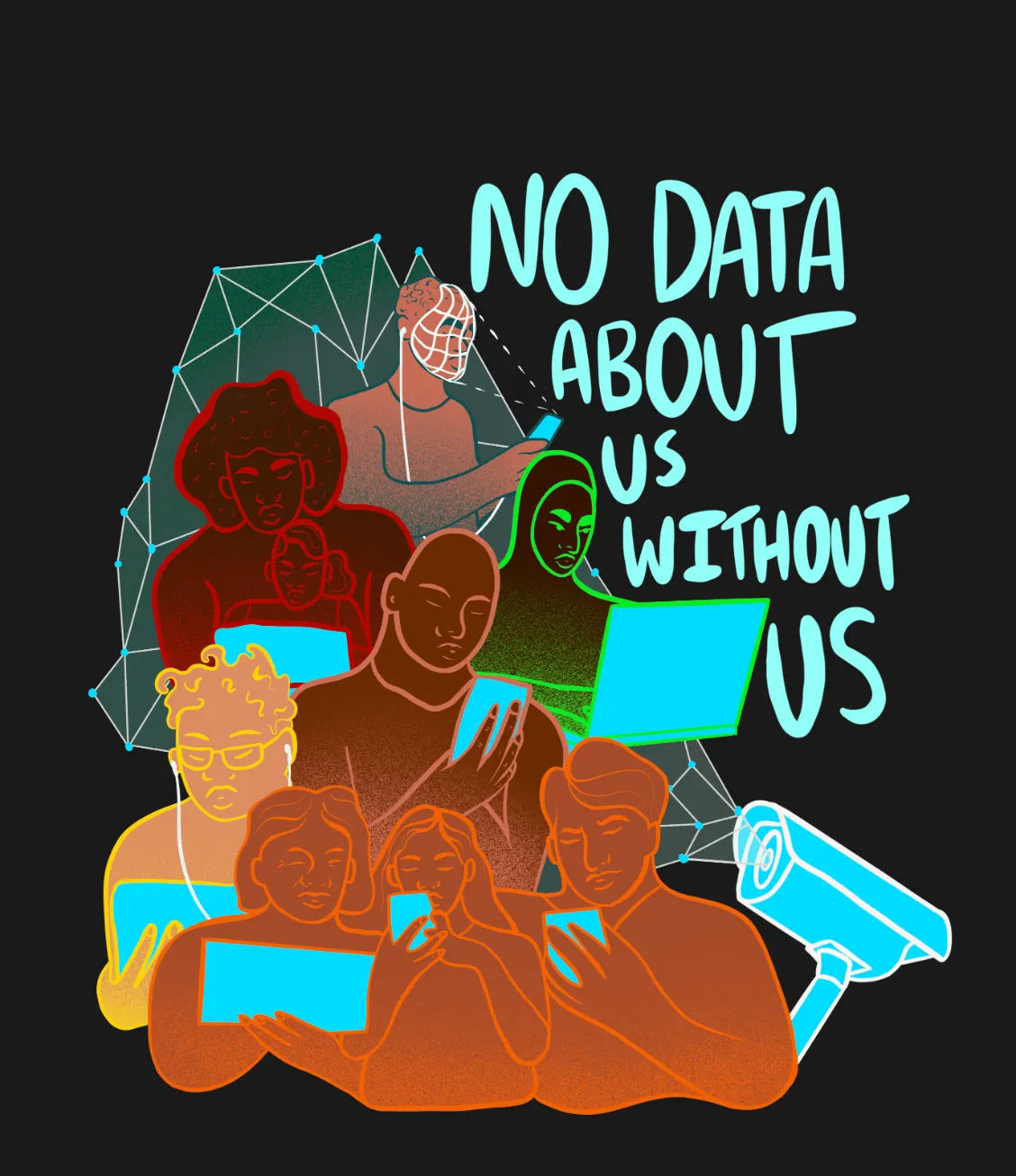La revolución de la vigilancia en Delhi: Cómo el proyecto de vídeovigilancia de la ciudad redefine la seguridad, pero suscita inquietudes sobre el derecho a la ciudad
Rituraj PeguEn esta entrada de blog, nuestro Fellow 2023 Rituraj Pegu se adentra en el dinámico paisaje urbano de Delhi.

Ravi Sharma para Unsplash
En el dinámico paisaje urbano de Delhi, toma forma una iniciativa transformadora a través del proyecto Delhi City Surveillance CCTV, dirigido por el Departamento de Obras Públicas (PWD) bajo la égida del Gobierno del Territorio de la Capital Nacional (NCT) de Delhi. Esta ambiciosa empresa pretende revolucionar el panorama de la seguridad pública, con especial atención a la mejora de la seguridad de los habitantes de la ciudad, en particular de las mujeres. Sin embargo, la omnipresente implantación de infraestructuras de vigilancia suscita una investigación matizada sobre la posible invasión del marco teórico del "derecho a la ciudad". Arraigado en la sociología urbana, este concepto postula el derecho fundamental de los ciudadanos a configurar y utilizar activamente su entorno urbano. A medida que Delhi se convierte en una de las ciudades más vigiladas del mundo, surge un discurso crítico que contempla el delicado equilibrio entre la seguridad pública y la salvaguarda de los derechos intrínsecos de sus habitantes a participar en la cocreación de su entorno urbano. Esta yuxtaposición suscita una reflexión sobre las dimensiones éticas, jurídicas y sociales inherentes al despliegue de tecnologías de vigilancia en el tejido urbano.
El dilema de la descentralización: Equilibrio entre seguridad y privacidad
Un aspecto destacable del proyecto es la implicación activa de las comunidades para garantizar su seguridad. Las asociaciones de vecinos y las asociaciones de mercados desempeñan un papel crucial en el proceso de vigilancia. Esto no solo aumenta la eficacia de la vigilancia, sino que también fomenta una responsabilidad compartida entre los residentes, promoviendo la colaboración con la policía y el Departamento de Obras Públicas (PWD) para lograr una sinergia única en la defensa de la seguridad pública.
Sin embargo, el planteamiento de descentralización, al tiempo que da poder a las comunidades, introduce preocupaciones sobre el posible abuso de la vigilancia. Las capacidades del sistema, incluidos los controles sanitarios automatizados y la vigilancia a distancia por parte de diversas entidades, crean un delicado equilibrio entre seguridad y privacidad individual. A medida que el gobierno obtiene un acceso sin precedentes a la vida cotidiana de los ciudadanos, las cuestiones sobre el alcance de la vigilancia y las salvaguardias existentes se vuelven fundamentales.
La vigilancia a través de la lente del Derecho a la Ciudad
Acuñado por Henri Lefebvre, el "derecho a la ciudad" denota el derecho colectivo de los ciudadanos a participar activamente en la configuración, el diseño y la utilización de su entorno urbano, otorgándoles la autoridad para llevar a cabo transformaciones de acuerdo con las necesidades y aspiraciones de la comunidad. En el contexto de la revolución de la vigilancia en Delhi, resulta imperativo examinar críticamente la adecuación de esta iniciativa a los principios fundamentales del derecho a la ciudad. Esta exploración pretende evaluar el impacto en la agencia de los ciudadanos, tratando de discernir si las medidas de vigilancia sirven para potenciar o restringir su papel participativo en el contexto más amplio de la gobernanza urbana. Las amplias medidas de vigilancia suscitan preocupación por la violación de la intimidad, la libertad de circulación y el derecho a disentir de los ciudadanos. Es imperativo evaluar si el despliegue de tecnologías de vigilancia podría recortar inadvertidamente las libertades individuales y obstaculizar la capacidad de los ciudadanos para participar en su entorno urbano sin un escrutinio injustificado, poniendo así de relieve el delicado equilibrio necesario para evitar la violación de los derechos fundamentales.
Navegar por la seguridad y los derechos cívicos
Es imperativo garantizar que este aumento de la seguridad no se produzca a costa de comprometer los derechos fundamentales de los ciudadanos. La instalación se ha justificado por la acuciante necesidad de seguridad pública, sobre todo para hacer frente a los índices inquietantemente elevados de delitos violentos contra mujeres y niños. Sin embargo, se plantea una cuestión crítica: ¿una vigilancia tan amplia se traduce realmente en una reducción de la delincuencia, haciendo que Delhi sea más segura, especialmente para las mujeres? Un examen más detallado de los datos publicados por la Policía de Delhi sobre los delitos contra las mujeres de 2019 a 2021 revela una tendencia preocupante. Según el informe más reciente de la Oficina Nacional de Registros de Delitos (NCRB), Delhi fue testigo de un aumento sustancial de los delitos contra las mujeres en 2021, registrando 13.892 casos. Esto supone un notable aumento de más del 40% en comparación con la cifra de 9.782 de 2020. A pesar de los mayores esfuerzos de vigilancia, los delitos contra las mujeres han experimentado un aumento significativo en los últimos años. Esto no sólo plantea dudas sobre la eficacia de la estrategia de vigilancia, sino también sobre la utilización de los fondos públicos. Esto subraya la necesidad de reevaluar reflexivamente el equilibrio entre las medidas de seguridad y la salvaguarda de los derechos de los ciudadanos en la ciudad.
Preocupación por la privacidad en la era de la vigilancia
La proliferación de la vigilancia constante suscita un examen crítico del delicado equilibrio entre seguridad pública y libertades individuales. Los expertos subrayan la urgente necesidad de marcos jurídicos sólidos y políticas transparentes para salvaguardar el derecho a la intimidad de los ciudadanos, sobre todo teniendo en cuenta la falta de normativa en torno a la recogida y almacenamiento de datos a través de las cámaras de vídeovigilancia. El reconocimiento facial, cuando se integra en estos sistemas, supone una importante amenaza para la privacidad, lo que hace temer repercusiones desproporcionadas en determinadas comunidades. En particular, el uso de la tecnología de reconocimiento facial durante la investigación de los disturbios del noreste de Delhi en 2020 ha desatado la polémica, con preocupaciones sobre posibles sesgos e impactos en las poblaciones musulmanas. Además, a medida que el gobierno de Delhi amplía el alcance de las cámaras de vídeovigilancia en las escuelas, permitiendo el acceso en directo a los padres, los expertos advierten contra esta vigilancia debido a la insuficiencia de salvaguardias y a las posibles violaciones de la privacidad, especialmente en lo que respecta a los menores. Los críticos sostienen que es esencial contar con leyes exhaustivas de protección de datos para proteger las grabaciones de los escolares y hacer frente al cambiante panorama de la vigilancia. Sin estas medidas de protección, la red de vigilancia corre el riesgo de transformarse en una herramienta de control en lugar de servir a su finalidad prevista de seguridad colectiva.
Conclusiones: Hacia una Delhi inclusiva y segura
En conclusión, la Revolución de la Vigilancia de Delhi marca un cambio significativo en el modo en que la ciudad gestiona la seguridad pública, remodelando su perspectiva sobre la seguridad urbana. Sin embargo, a medida que se desarrolla este cambio, se hace necesario un examen crítico de su impacto en el derecho a la ciudad. Al tiempo que adopta los avances tecnológicos, es crucial que la ciudad se adhiera a los principios de inclusión, transparencia y derechos individuales. Alcanzar este delicado equilibrio brinda a Delhi la oportunidad de dar ejemplo en materia de vigilancia urbana, dando prioridad tanto a la seguridad como a la capacitación de los ciudadanos. El reto al que nos enfrentamos consiste en formular políticas que protejan la privacidad y, al mismo tiempo, aprovechen el potencial de la vigilancia para el bien de la comunidad.



